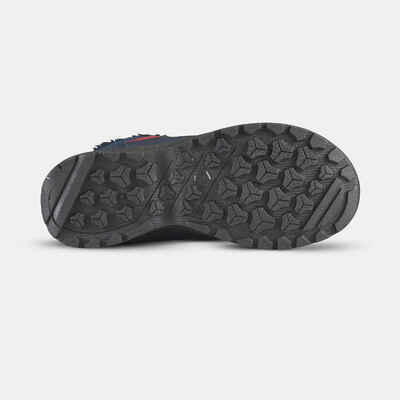Kids' warm and waterproof hiking shoes - SH500 MTN lace-up - size 2.5 - 5.5
Store Availability
Store Availability
Ecodesign approach
With ecodesign, we reduce the environmental impact of our products.
Analysing the product's environmental footprint enabled us to identify the most impactful stages of its life cycle. Thanks to this approach, our design teams were able to develop this product while significantly reducing its environmental impact.
Ecodesign actions on this product
-
 Process
ProcessDope dyed
Product made from 3% dope dyed yarn
Using this mass-dyeing process enables us to reduce CO2 emissions linked to the production of dyed textiles by at least 17% compared to conventional dyeing.
-
 Material
MaterialRecycled polyester
Product made from 15% recycled polyester
Using recycled polyester rather than conventional polyester reduces the CO2 emissions linked to the material by at least 17%.
-
 Material
MaterialRecycled thermoplastic
Product made from 9% recycled thermoplastic
Using recycled thermoplastic rather than conventional thermoplastic reduces the CO2 emissions linked to the material by at least 11%.




